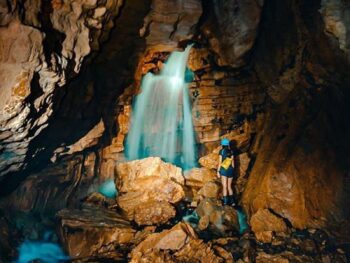Recollections.
I can still hear the distinct sound of birds calling to each other. And remember the melodic staccato of raindrops shaken free from the forest canopy by the clean and clear winds following a tropical rainforest storm in Costa Rica’s Braulio Carrillo National Forest. The memories of the scents, sounds, and full-body experience of emerging myself in the park’s pure and untainted nature, are ones that I’m certain to carry with me always.
Taking the road less traveled.
My favorite hiking buddy and I visited Costa Rica last March and among our many eco-adventures was the unforgettable Braulio Carrillo National Park. The park is Costa Rica’s biggest conservation area, spanning 50,000 hectares. It consists of steep mountains and canyons blanketed with dense forests, rivers, and diverse array ecosystems. Its rugged topography and high rainfall make it one of the country’s least visited attractions. This ensures that the wildlife and rare species of plants and insects flourish.
Volcanoes, volcanoes and volcanoes…oh my.
Located just north of San Jose along the interior Central Mountain Range, the park is home to the popular Barva Volcano and dormant Chompipe, Cacho Negro, and Las Tres Marias volcanoes. Its highest point is the nearly 3,000 meter-high Barva Volcano summit. It then drops drastically down to sea-level, into the Caribbean lowlands and the La Selva Protected Zone in Puerto Viejo de Sarapiqui. This impressive drop in elevation, combined with the area’s phenomenally high rainfall and elaborate river systems, accounts for the area’s massive hydroelectric energy production.
The trek begins…
We explored the park over a three-day period. We visited the Barva Volcano and the Quebrada Gonzalez ranger stations and public access areas in order to get a feel for the regional diversity. The third station, Ceibo Sector, is for conservation and research only.
Getting there.
The Barva Volcano station is located 16 km north of the city of Barva de Heredia in the Central Valley, passing through the towns San Jose de la Montana and Sacrament. We had rented a small 4×4 Daihatsu Bego and were thankful for the car’s agility and power as we navigated the mountainous terrain around Braulio Carrillo; not to mention it was very economical to rent and on fuel.
Day 1
We managed to hike four trails on our first day: Cacho Venado, Laguna Barva, Copey, and Mirador Vara Blanca trail, with a total length of 10 km. The trails had picnic tables, camping areas, and bathroom facilities, as well as breathtaking panoramic views of the surrounding countryside and the volcano’s three crater lakes, Barva, Danta, and Copey.
Day 2
The following day we spent exploring the Quebrada Gonzalez Sector of the park located 42 km northeast of San Jose on Route 32 heading towards Limon City through a section of Braulio Carrillo. This gave us our first glimpse of the larger-than-life rainforest vegetation that literally blankets the landscape in a sea of verdant green. We were rendered speechless by the giant-leafed plants, waterfalls, and a cacophony of wildlife calling to each other in the treetops.
The park harbors several distinct climates and their corresponding ecosystems and is covered with nearly 90% of pristine forest, including high-altitude cloud forest and lowland tropical rainforest. It has one of the highest levels of biodiversity in Costa Rica with more than 600 identified species of trees, 530 species of birds, and 135 species of mammals. Among the animal and bird species are the solitary eagle, the bushmaster, and the popular Bare-necked Umbrellabird, and animals such as tapirs, pumas, ocelots, three species of monkeys, and a myriad of snakes and reptiles.
Once we’d entered the park and paid the inexpensive $12 entrance fee, we found a number of certified naturalist guides offering bilingual tours into the park’s interior. There is an aerial tram gliding above and within the jungle canopy, canopy zip-lines, hanging bridges, butterfly and orchid gardens, as well as amphibian and reptile terrariums displaying living species – and of course, hiking trails. We easily mastered the three available trails, Las Palmas (1.5 km), El Ceibo (2.5 km), and Botarrama trail (1.5 km), and ate a picnic lunch overlooking the Rio Sucio River.
Day 3
On our third day, we took the aerial tram and zip-lined in the morning before heading down on Route 4 to the La Selva protected area of the park and the La Selva Biological Station where we hiked some of the 50 km of trails. We learned more about the fascinating biodiversity of the park and lowland region. The La Selva Biological Station is recognized as one of the world’s leaders in tropical forest research. Their goal is to conserve the forests by studying the interaction between local towns and villages and the protected areas. There are also research labs.
We came, we saw, we walked…a lot.
In three short days we had succeeded in experiencing what evolution has taken hundreds of thousands to create. Braulio Carrillo may be off the beaten path and prone to rain clouds and soggy hiking boots; however, the memories you’ll make exploring its depths far outweigh its short-lived discomforts. Just don’t forget to bring extra socks!


